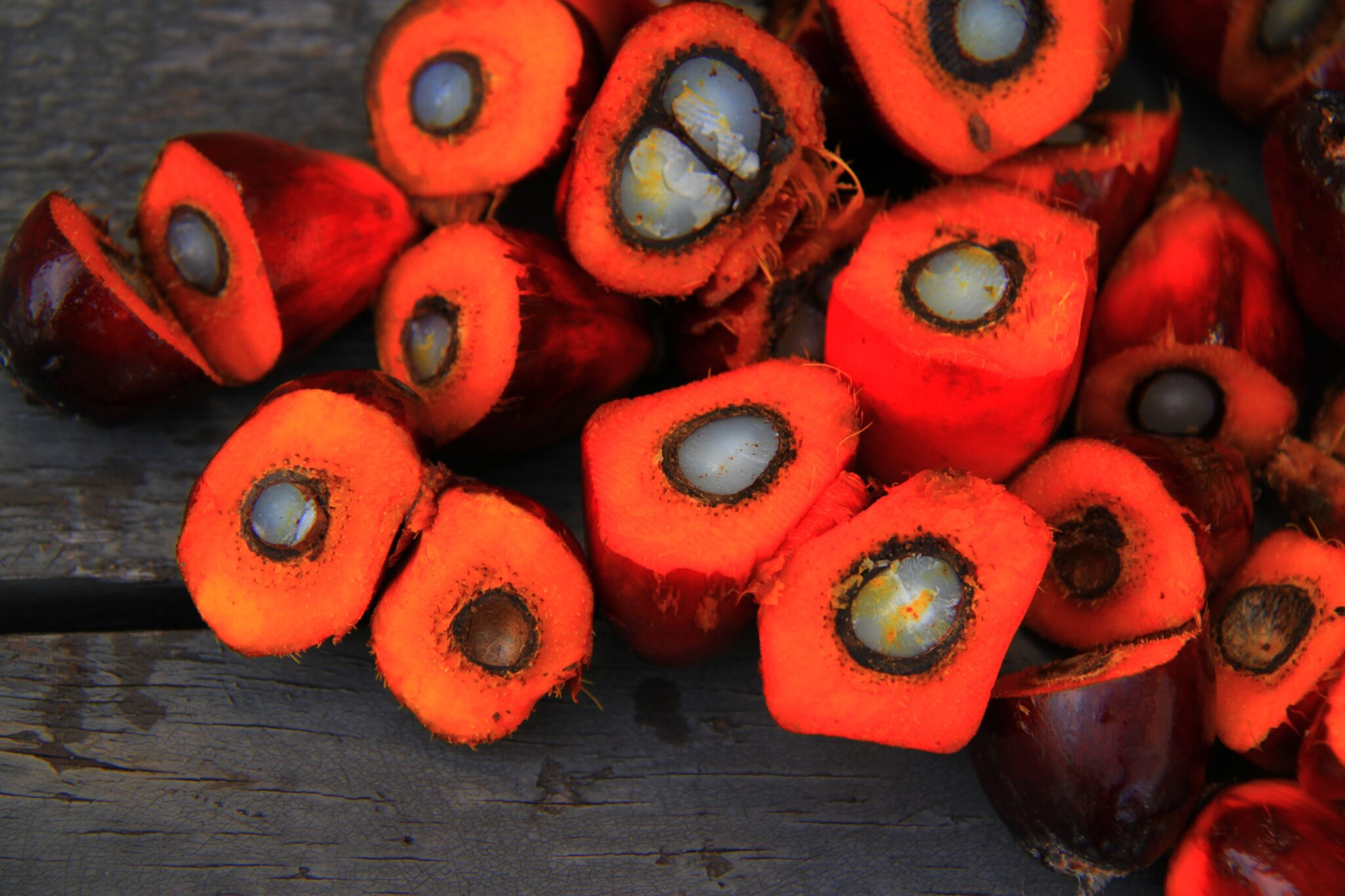Biodiesel is one of the major biofuels in the contemporary renewable energy mix. Oils and fats of vegetable and animal origin constitute the main feedstock for biodiesel, which can then be blended into diesel or in some cases used directly as B100. Let’s have a look at the basics of biodiesel production.
What Is Biodiesel?
Biodiesel is a renewable energy product and liquid fuel produced from vegetable oils or animal fats.
The earliest recorded use of vegetable oil as an engine fuel traces back to Rudolf Diesel whose diesel engine he patented was designed to run on peanut oil during the Paris exhibition of 1900.
The current biodiesel process known as transesterification was first patented by the Belgian researcher Georges Chavanne back in 1937.
Global production of biodiesel is mainly limited by land availability for feedstock crops. Since vegetable oils are the main feedstock for biodiesel production, the availability of vegetable oils is a key limiting factor to the production of biodiesel.
Global demand for biodiesel is dictated by legal mandates as well as an economic rationale (product arbitrage).
There are mainly two scenarios that lead to biodiesel consumption:
- Legal mandate use (such as in EU due to the RED)
- Discretional blending (when the cost of biodiesel is lower than fossil fuel alternatives)
Why Biodiesel?
You might want to ask why Rudolf Diesel’s use of straight vegetable oil (SVO) as a fuel had to be replaced by transesterification. Why using biodiesel as fuel when one could use vegetable oils directly?
In fact, straight vegetable oils are too thick or viscous to burn completely in a diesel engine. Thus, the transesterification process comes in handy at reducing the SVO viscosity, thus making them efficient for the combustion in diesel engines.

Biodiesel Advantages Over Fossil Diesel
The production of biodiesel is widely criticized for being an important consumer of vegetable oil products, thus increasing the overall demand for vegetable oil and hence its prices.
However, the production of biodiesel as a replacement for fossil fuels presents many advantages over fossil diesel:
- It can reduce dependency on imported fossil fuels and oils, since it can be locally produced from locally available raw materials;
- From having oxygen in its molecular structure, biodiesel combustion in engine is much more complete, and thus is less polluting than the fossil diesel, apart from nitrogen oxides pollutants;
- As a fuel mainly produced from edible oils and animal fats, biodiesel is less toxic and thus presents less environmental;
- Biodiesel has higher flash point (ignition point), and thus does not present as much fire and/or explosion hazard as fossil diesel;
- Another advantage of biodiesel is its biodegradability. Indeed, it has been reported that biodiesel degrades naturally within few weeks outdoors. This reduces the environmental hazards that are often caused by oil spills on land or at sea;
- Biodiesel is friendly to car engines as it is much more lubricating that its fossil counterpart.

Main Biodiesel Feedstocks
With regards to its feedstocks, biodiesel fuel is versatile; it can be produced from a wide range of natural oils, from vegetable oils, waste oils to animal fats.
Microbial and algal oil are among emerging and promising biodiesel feedstock alternatives, whereas algal oil has been reported to be with the highest yield per ha comparatively to any other crop.
For a producer of biodiesel, it is important to decide on your feedstock informatively, since the feedstock accounts for the highest percentage of the biodiesel production costs and it determines the final technical properties of the biodiesel.
Factors such as geography, climate, and economics affect the choice of feedstock for the production of biodiesel.
For this reason, palm oil is mostly used in tropical countries, whereas soybean and animal fats are preferred by American producers, and rapeseed oil being the primary feedstock for the European countries.
Palm oil and soybean oil are the two most commonly used biodiesel feedstocks.
The biodiesel industry is highly dependent on the vegetable oils industry since vegoils or edible oils are the main feedstock in the production of biodiesel biofuels.
Biodiesel production
A biodiesel production plant is typically composed of storage tanks (raw oil, methanol/ethanol, catalyst, finished biodiesel), reaction tanks, as well as pumps, pipes, and valves. An industrial setting should also have a process control unit, with automated modules and processes.
Feedstock Conditioning
Assuming that the raw oil supplied to the biodiesel plant is ready for immediate processing, a typical biodiesel production plant consists of systems allowing for the process of main operations namely raw material conditioning (preheating, water evaporation), transesterification, and purification. Additional final product conditioning steps can be added including antifreeze and stabilizing agent addition.
During the preheating stage, the oil feedstock is heated to a certain temperature (around 60oC) to reduce viscosity, and for easy transfer and filtration. A higher temperature (around 80oC) is further required for the water evaporation process under a vacuum.
Transesterification
Transesterification is the process used to produce biodiesel from vegetable oils.
Firstly, the oil feedstock is mixed with an alcohol, usually methanol or ethanol, in presence of a suitable catalyst, mostly a base.
As the process byproduct, glycerine (raw) is also produced alongside the desired biodiesel, and it can be recovered and purified for other uses.
During the purification stages, glycerine is first naturally made to settle and then pumped-out awaiting subsequent purification.
The biodiesel is further washed with water or a purpose-made agent to remove residual base catalyst and other impurities; minerals and organics.
Water is eventually evaporated to standards thresholds as its high level can hamper the biodiesel stability as well as performance as a fuel.
What Is Transesterification?
Transesterification, the process leading to biodiesel, consists technically of removing oil chains from glycerine units and replacing this one with light-weight (molar mass) alcohol units, usually methanol or ethanol. This results in a significantly reduced viscosity and ignition point of the final fuel.
For each glycerol unit displaced, three units of lighter alcohol are consumed: The reaction normally takes place at mild temperature of about 60-65oC.
Transesterification is usually a slow process naturally, the reason why artificial acceleration is needed, and this is achieved by the use of catalysis.
The most common catalyst used in biodiesel production through transesterification is a base, precisely sodium hydroxide (NaOH) or potassium hydroxide (KOH).
However, though more expensive their methoxides (Sodium methylate or potassium methylate) can also be used alternatively, with advantages of increased handling safety, as well as leading to purer glycerin.
Solid-phase catalysts have also been investigated with the advantage of being readily recoverable for reuse, thus reducing production costs significantly.
Being a reversible reaction, the amount of the reacting alcohol used must be higher than the theoretical needed amount, but the excess alcohol is recoverable for later use after purification.

Glycerin From Biodiesel Production
Glycerin is that greasy liquid that settles from biodiesel after transesterification. It is basically a dense alcohol with a sweet taste.
Glycerin is a very common ingredient in cosmetics and pharmaceuticals, but the one from a biodiesel plant often requires further purification.
For small-scale biodiesel producers, uses such as biogas boosting additives and heat generation in boilers are ideal, since its purification process requires significant investment, that can only be afforded by large-scale plants.
Other references
Caye M. D. et al., Biofuels Process Engineering, 2008
Gerhard K. et al. The Biodiesel Handbook, 2005
https://irena.org
https://iea.org




